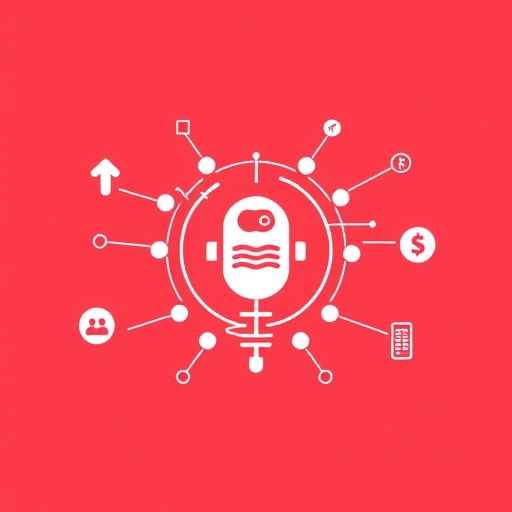In recent years, the rise of large language models (LLMs) has opened new frontiers in the educational landscape. Researchers have begun to explore the profound implications these models can have on conventional teaching and learning mechanisms. Among these pioneers are K. Sridharan and G. Sivaramakrishnan, who have embarked on a groundbreaking study titled “Large language models as educational collaborators: developing non-conventional teaching aids in pharmacology & therapeutics.” This research delves into how LLMs can be integrated into the educational framework in innovative ways, particularly within the fields of pharmacology and therapeutics.
The essence of the study raises questions that challenge the traditional paradigms of education. As classrooms evolve to accommodate various learning styles and pedagogical strategies, the introduction of non-conventional teaching aids becomes increasingly vital. LLMs, equipped with the ability to process and generate human-like text, can serve as dynamic educational collaborators. By offering personalized assistance to students, these models bridge the gap between theory and practice, making complex subjects more accessible.
In the context of pharmacology and therapeutics, the stakes are particularly high. The rapid advancements in medical science necessitate a robust understanding of evolving concepts for both students and practitioners. By harnessing the capabilities of LLMs, educators can create a more engaging and stimulating learning environment. Students can interact with these models to clarify doubts, seek additional information, or even simulate case studies that require critical thinking and application of knowledge.
Sridharan and Sivaramakrishnan’s work highlights how LLMs can assist in personalized learning paths. Traditional methods often adopt a one-size-fits-all approach, but with the integration of AI, the educational experience can be tailored to individual needs. Students might learn at different paces; LLMs can adapt to these unique journeys by providing resources and explanations that resonate with each learner’s understanding. This approach not only enhances knowledge retention but also instills confidence in students, empowering them to take charge of their learning processes.
Furthermore, the potential of LLMs extends beyond mere content delivery. They can facilitate collaborative learning environments where students engage with their peers and the AI in a meaningful way. For example, group projects could incorporate LLMs to pose questions, generate discussion points, or provide feedback on presentations. This interaction fosters a sense of community and cultivates essential soft skills such as teamwork and communication.
In addressing the challenges that educational institutions face, it’s clear that the potential for LLMs is vast. The ability to provide instant feedback in a supportive manner is transformative. Students often hesitate to ask questions in traditional settings due to fear of judgment. Yet, LLMs can offer a safe space where learners can inquire about complex topics without hesitation, thereby promoting a healthy dialogue around difficult subjects.
Moreover, LLMs play a significant role in reducing cognitive overload. The sheer volume of information available can be overwhelming, particularly in fields as extensive as pharmacology and therapeutics. By curating content and distilling information into digestible segments, these models can help students navigate through the chaos of data more comfortably. This analytics-driven approach enhances focused learning, channeling students’ energies toward mastering key concepts without the distraction of superfluous details.
Another significant point raised in the study involves the ethical considerations surrounding the use of AI models in education. As with any technological advancement, there is a pressing need to address concerns regarding privacy, data security, and the potential for biases inherent in AI systems. It is crucial for educators and institutions to remain vigilant about how these tools are employed. Developing guidelines and ethical standards will ensure that the integration of LLMs does not compromise the integrity of educational practices.
Sridharan and Sivaramakrishnan also underscore the necessity for training educators to effectively utilize these tools in their teaching. Familiarity with LLMs can significantly enhance their capabilities as instructors, allowing them to guide students in their interactions with AI technology. Professional development programs that focus on AI competencies will empower teachers, enabling them to leverage the full spectrum of educational benefits that these models offer.
As we delve deeper into the transformative role of large language models, it is essential to explore real-world applications that illustrate their utility in promoting a richer educational framework. Through pilot programs and continuous evaluation, educational institutions can gather insights on best practices for implementing LLMs in various curricula. These findings not only possess the potential for reshaping pedagogical strategies but may also serve as a stepping stone towards redefining the overall educational experience for students.
Looking ahead, the collaborative efforts of researchers like Sridharan and Sivaramakrishnan aim to foster an environment where AI-based learning tools become mainstream. Their findings could propel the adoption of LLMs across higher education institutions, creating a new era of academic collaboration marked by innovation and inclusivity. By prioritizing student-centric approaches, they advocate for educational practices that transcend traditional boundaries, preparing future healthcare professionals in ways previously unimaginable.
In conclusion, the innovative research conducted by K. Sridharan and G. Sivaramakrishnan opens the door to an exciting future for education in pharmacology and therapeutics. By integrating large language models as educational collaborators, we have the potential to enhance student learning outcomes significantly. These AI-driven tools promise not only to transform the way knowledge is imparted but also to inspire students to engage in lifelong learning. As we stand on the cusp of this educational revolution, the importance of continuous research and ethical considerations cannot be overstated. Embracing this change with thoughtful guidance will undoubtedly pave the way for a more effective and enriching educational landscape within healthcare.
Subject of Research: The integration of large language models as educational collaborators in pharmacology and therapeutics.
Article Title: Large language models as educational collaborators: developing non-conventional teaching aids in pharmacology & therapeutics.
Article References:
Sridharan, K., Sivaramakrishnan, G. Large language models as educational collaborators: developing non-conventional teaching aids in pharmacology & therapeutics.
BMC Med Educ 25, 1525 (2025). https://doi.org/10.1186/s12909-025-08134-2
Image Credits: AI Generated
DOI: 10.1186/s12909-025-08134-2
Keywords: large language models, pharmacology education, AI in education, personalized learning, educational collaboration, innovative teaching aids.




